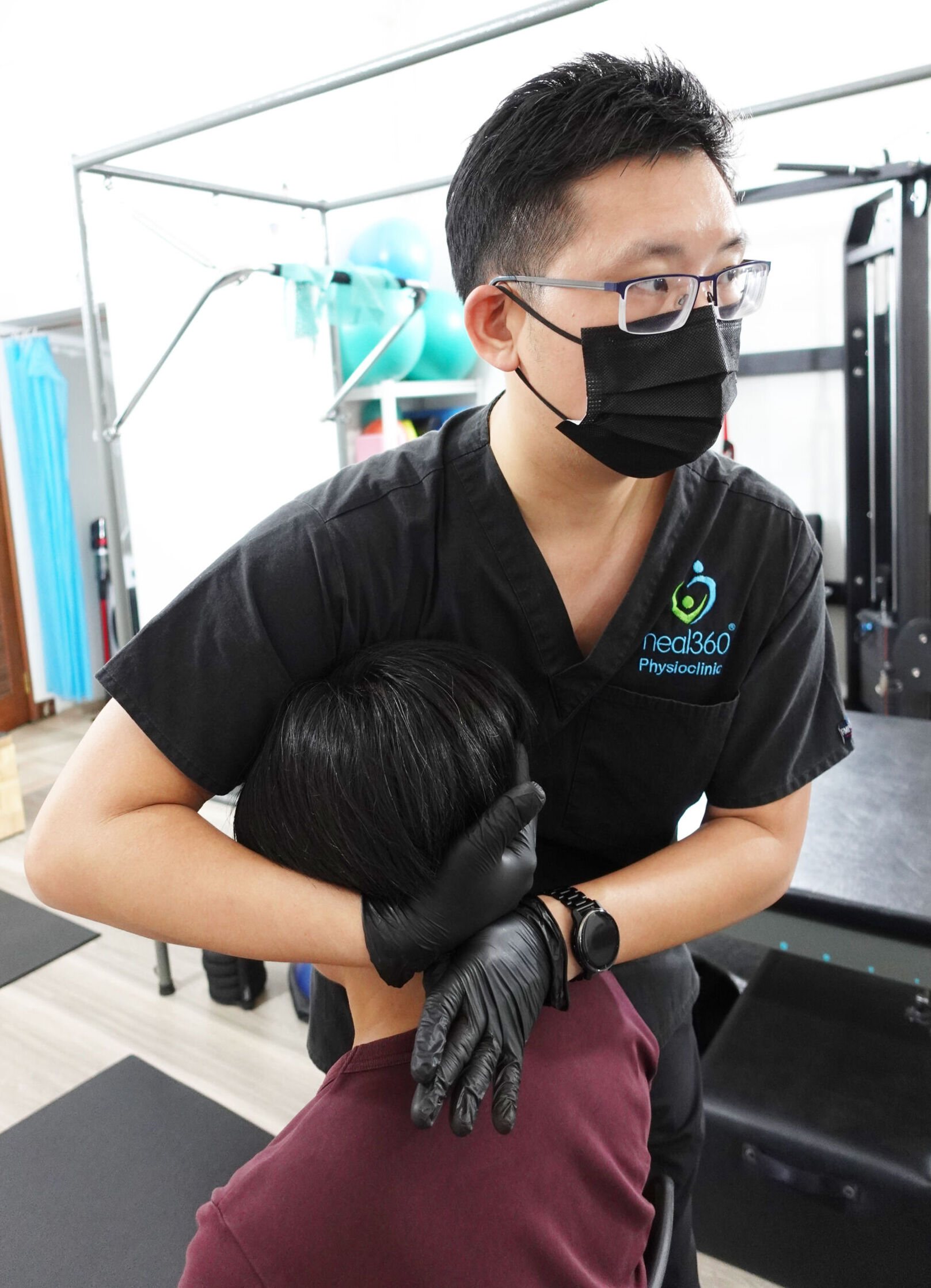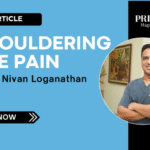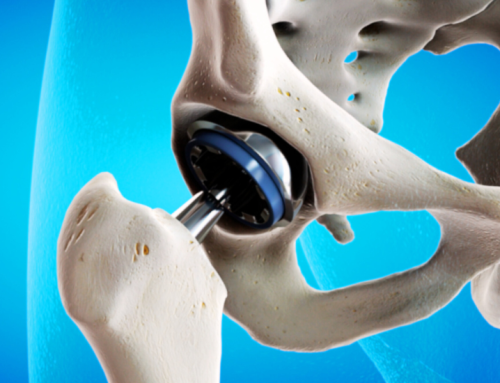
Pain Management from a Physiotherapist’s Perspective
In a physiotherapist’s daily course of work, some of the common complaints they often hear include “I’ve had this niggling pain on and off for ages”, “I am fine when I stop exercising, but as soon as I start exercising again, the pain returns”, and “I’ve seen multiple practitioners and had some sort of relief, but the pain always seems to come back”. If any of these sounds familiar, you are not alone.
Chronic pain is one of the most frustrating and persistent issues people face. It often requires a combination of approaches to manage effectively. So, how can physiotherapy help in tackling these types of pain? Let us explore the complex relationship between pain and healing, and how physiotherapists can offer targeted, long- term relief.
WHAT IS PAIN?
To understand how physiotherapists address pain, it is important to first understand what pain is and how it manifests. At its core, pain is an output by the brain that serves as a warning signal to protect the body from tissue damage. This is particularly true in the case of acute injuries, where pain alerts us to potential harm or to prevent further harm. It is more complicated in chronic pain scenarios. In some cases, pain signals persist even when there is no visible injury. To navigate this, it helps to understand the different categories of pain, namely: nociceptive pain, neuropathic pain, and nociplastic pain.
Nociceptive Pain
This is the most common type of pain and typically results from tissue damage, like cuts, bruises or fractures. For example, when you break a bone, the pain you feel is a direct response to the damage done to the bone and surrounding tissues. This type of pain generally follows a predictable pattern, starting as an acute sensation right after the injury and gradually reducing as the tissue heals.
Neuropathic Pain
Neuropathic pain occurs when there is damage to the nervous system itself. This can include nerve compression, inflammation or even injury. One common example is sciatica, where the sciatic nerve in the lower back is pinched. This leads to sharp, shooting pain down the leg. Unlike nociceptive pain, which directly correlates to tissue damage, neuropathic pain can be more elusive. It is often described as tingling, numbness, or an ongoing burning sensation.
Nociplastic Pain
The most complex form of pain is nociplastic pain, which was only recently classified in 2016. This pain occurs without clear tissue damage and often arises in chronic conditions, such as phantom limb pain, fibromyalgia or tension headaches. For those with nociplastic pain, the nervous system itself becomes hypersensitive, amplifying normal sensory signals into a pain response. Because this type of pain does not show up on standard imaging or tests, it can be particularly frustrating to diagnose and manage.
Understanding these types of pain helps to clarify why some individuals experience long-term pain even after their initial injury has healed. This ongoing discomfort may not be a result of tissue damage, but rather a problem with how the body’s nervous system processes pain signals.

PHYSIOTHERAPY – MANAGING PAIN
Now that we have outlined the different pain types, let us dive into how physiotherapy can help to manage and treat these pain conditions effectively.
Managing Nociceptive Pain
When you suffer an injury, the body undergoes a healing process in phases. The first is the inflammatory phase, where the body reacts to the injury with heat, swelling and redness. This phase can be painful, but it is essential for healing. Physiotherapists step in during this phase to manage the inflammation and ensure that it does not get out of control, potentially leading to chronic pain.
Treatment options:
Cold Laser Therapy or Low-Level Laser Therapy (LLLT): These techniques help to reduce inflammation at the cellular level by stimulating healing processes.
Pulsed Ultrasound: A type of sound wave therapy that targets deeper tissues to reduce swelling and promote healing.
TENS (Transcutaneous Electrical Nerve Stimulation): TENS units deliver small electrical pulses to the skin to block pain signals and stimulate endorphin production, providing relief.
Light Exercises, Manual Therapy, Dry Needling, and Taping: These hands-on and movement- based techniques help to reduce muscle tension, maintain joint mobility, minimise muscle wasting and facilitate healing.

Managing Neuropathic Pain
Neuropathic pain can be particularly challenging, as it is often caused by nerve damage or compression. The pain may not always resolve on its own and may require targeted interventions to alleviate symptoms.
Physiotherapists typically use a combination of:
Nerve Mobilisation (Nerve Flossing): Gentle stretching or gliding exercises help to “untrap” the nerve and reduce pain caused by compression.
Desensitisation Techniques: These involve applying different types of stimuli (e.g. light touch, pressure, etc.) to the affected area to reduce the hypersensitivity of the nerve.
Spinal Decompression Therapy: Often called traction, this aims to relieve pressure on the spine and its associated nerves. It can be especially effective in cases of sciatica or cervical radiculopathy (pinched nerves in the neck).
Abdominal Core Exercises: Strengthening the muscles that support the spine can reduce pressure on nerve roots, improving both pain and function.
Other Specialised Techniques: Methods such as the McKenzie Mechanical Diagnosis and Therapy as well as the Mulligan’s Concept of Manual Therapy are specific methods that aim to offload the spine and reduce the irritation and compression on the affected nerve.
Managing Nociplastic Pain: Nociplastic pain is the most challenging to treat due to its complex nature. Since there is usually no specific tissue damage, physiotherapists must rely on a holistic, multifaceted approach to assess and manage the pain.
They might incorporate:
Cognitive Behavioural Therapy (CBT): This therapy helps patients to manage pain by changing the way they think about and react to it. It focuses on coping strategies, relaxation and stress management techniques.
Cognitive Functional Therapy (CFT): This is a more specialised approach that integrates movement retraining, cognitive strategies, and education to address the physical and psychological factors that contribute to chronic pain.
Education and Pain Neuroscience: Educating patients about how their nervous system works can help them to understand why their pain persists, potentially reducing fear and anxiety related to movement and activity.
Given the complexity of nociplastic pain, a collaborative approach with pain specialists and psychologists may be necessary to help patients regain function and their quality of life.

INTEGRATING PAIN MEDICATION AND PHYSIOTHERAPY
“Should I see a physiotherapist if I am already on pain medication?” This is a common question many patients ask when managing chronic pain, and the short answer to this is “yes”. Physiotherapy and pain medication can complement each other, and both play important roles in a comprehensive pain management plan.
Pain medication, whether it is over-the-counter pain relievers or prescribed medications (e.g. opioids), can provide short-term relief from pain. These medications help to reduce pain signals or inflammation, but do not address the underlying causes of pain. They can temporarily ease symptoms but do not promote healing or restore function.
On the other hand, physiotherapy targets the root causes of pain by improving movement, strengthening muscles, and correcting mechanical issues. It helps to prevent future injuries and can potentially reduce long-term reliance on medication.
Prolonged use of painkillers, especially opioids, can lead to dependence or unwanted side effects. Physiotherapy has no such risks. By combining both treatments, you can manage pain more effectively, reduce your reliance on medication, and focus on long-term recovery. While painkillers provide short-term relief, physiotherapy works on healing and rehabilitation. Together, they provide a holistic approach to pain management, enhancing both short-term and long- term outcomes.
TIMING MATTERS
One of the most important aspects of pain management is the timing of intervention. Physiotherapy is most effective when initiated early in the injury process. The longer the pain is left unaddressed, the more likely it is to transition from an acute pain to a chronic condition, making treatment more complicated and prolonged.
CONCLUSION
Pain, whether it is from a recent injury or a long-standing issue, is never just a simple problem to solve. It is a complex experience that involves both physical and psychological components. Understanding the different types of pain – nociceptive, neuropathic and nociplastic – can help you and your physiotherapist to choose the most appropriate treatment approach.
Physiotherapy offers a range of strategies to manage pain, from manual therapies and exercise programmes to cognitive approaches like CBT. More importantly, physiotherapists do not just treat the pain; they also work to address the underlying causes and prevent future problems. So, if you have been living with persistent pain, it might be time to seek the help of a physiotherapist. No matter how long you have been struggling, there is always hope for relief and recovery. PRIME












Leave A Comment